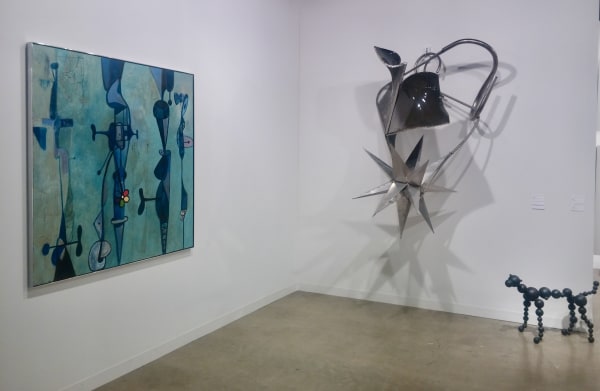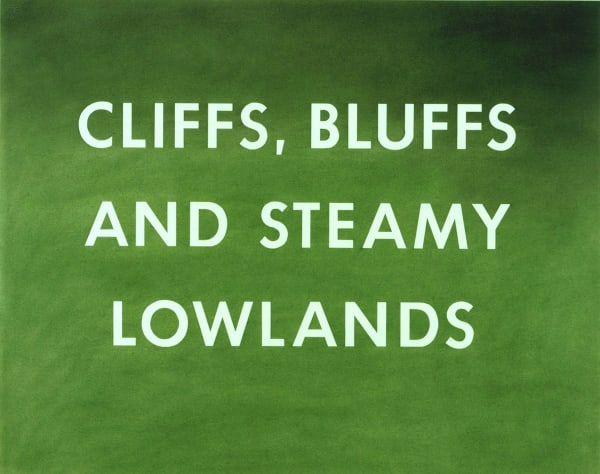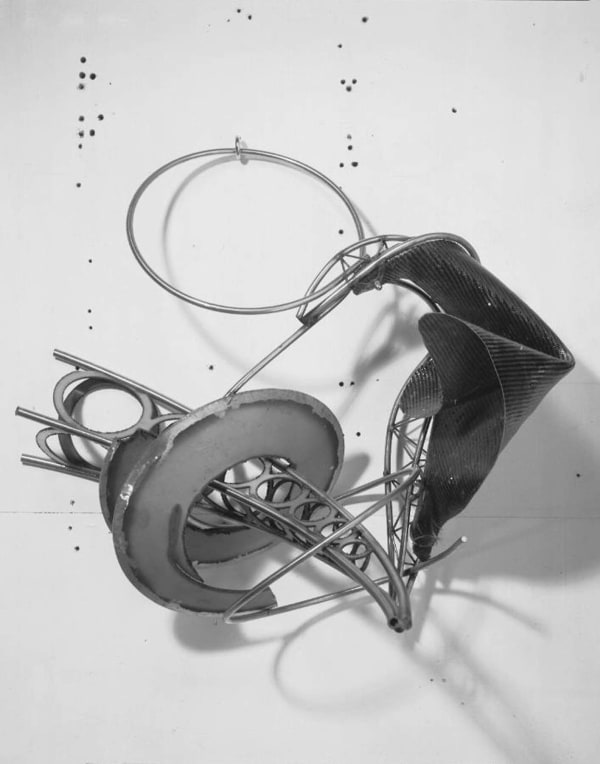Frank Stella American, 1936-2024
-
-
Selected Public Collections
Museum of Modern Art (MoMA), New York
The Metropolitan Museum of Art, New York
Whitney Museum of American Art, New York
Solomon R. Guggenheim Museum, New York
National Gallery of Art, Washington DC
Hirshhorn Museum and Sculpture Garden, Washington DC
Art Institute of Chicago, Chicago, Illinois
Museum of Fine Arts, Boston, Massachusetts
Philadelphia Museum of Art, Philadelphia, Pennsylvania
San Francisco Museum of Modern Art (SFMoMA)
Los Angeles County Museum of Art (LACMA)
Museum of Fine Arts, Houston, Texas
Tate, London, United Kingdom
Centre Pompidou, Paris, France
Stedelijk Museum, Amsterdam, Netherlands
Buffalo AKG Art Museum, Buffalo, New York
Walker Art Center, Minneapolis, Minnesota -
Exhibitions
-

55 Years
Isn't That Long Enough? Jun 26 – Aug 14, 2025Featuring paintings, works on paper, sculpture, film, and archival ephemera from the SFMOMA Library, and SFAI archive, this ambitious exhibition showcases museum-quality works by contemporary and historical artists, illustrating Berggruen...View More -

OBJECTively Speaking
Contemporary Sculpture Jul 27 – Oct 10, 2020Berggruen Gallery is pleased to present OBJECTively Speaking: Contemporary Sculpture, a powerful survey of forms that transcend notions of material, line, volume, and balance. This exhibition will be on view July 27 - October 9, 2020. You can view the exhibition in person by scheduling an appointment here. For a virtually interactive exhibition experience, we invite you to visit our online viewing room here.View More
We are also excited to announce the introduction of Berggruen Gallery 3D viewing experiences, a new feature that we are inaugurating with our current OBJECTively Speaking: Contemporary Sculpture exhibition.
OBJECTively Speaking brings together distinct processes from a dynamic range of artists while simultaneously meditating on the Minimalist art movement. The artists present in this showing have all worked to both continue and disrupt notions of sculpture as we understand it, even having influenced one another’s work in real-time. While Joel Shapiro’s geometric abstractions speak to Donald Judd’s unadorned objects, Anish Kapoor’s exploration of reflectivity acknowledges Joseph Kosuth’s unique use of light and medium 45 years prior. Examining the influence of Minimalist, Installation, Abstract, and Conceptual sculpture in the 20th and 21st centuries, OBJECTively Speaking presents a complex yet complimentary selection of works by:
Mark di Suvero
Antony Gormley
Mona Hatoum
Donald Judd
Anish Kapoor
Joseph Kosuth
Ritsue Mishima
Iran Do Espirito Santo
Joel Shapiro
Frank Stella
OBJECTively Speaking: Contemporary Sculpture, July 27 - October 9, 2020. On view by appointment only at 10 Hawthorne Street, San Francisco, CA 94105. To schedule an appointment, please click here. Images and preview are available upon request. For all inquiries please contact the gallery by phone (415) 781-4629 or by email info@berggruen.com. -

Contemporary Works on Paper
Mar 28 – May 5, 2018View More -

Looking Back: 45 Years
Oct 8 – Dec 19, 2015View More -

Selected Works
Nov 5 – Dec 5, 2009View More
-
-
Art Fairs
-

Art Basel Miami Beach
Miami Beach, Florida Dec 3 – 6, 2015John Berggruen Gallery is pleased to announce our participation in Art Basel Miami Beach. Please visit our booth D03 at the Miami Beach Convention Center.View More -

Expo Chicago
Chicago, Illinois Sep 17 – 19, 2015John Berggruen Gallery is pleased to announce our participation in the International Exposition of Contemporary & Modern Art (Expo Chicago) September 17th – 20th, 2015,...View More -

Art Basel
Basel, Switzerland Jun 4 – 8, 2008John Berggruen Gallery is pleased to announce our participation in Art |39| Basel.View More -

Art Basel
Basel, Switzerland Jun 13 – 17, 2007John Berggruen Gallery is pleased to announce our participation in Art |38| Basel.View More -

ADAA The Art Show
New York City, New York Feb 21 – 26, 2007John Berggruen Gallery is pleased to participate in The Art Show organized by the Art Dealers Association of America.View More -

Art Basel Miami Beach
Miami Beach, Florida Dec 7 – 10, 2006John Berggruen Gallery is pleased to announce our participation in Art Basel Miami Beach. Please visit our booth at the Miami Beach Convention Center.View More -

Art Basel
Basel, Switzerland Jun 14 – 18, 2006John Berggruen Gallery is pleased to announce our participation in Art |37| Basel.View More -

Art Basel
Basel, Switzerland Jun 15 – 20, 2005John Berggruen Gallery is pleased to announce our participation in Art |36| Basel.View More -

Art Basel
Basel, Switzerland Jun 18 – 23, 2003John Berggruen Gallery is pleased to announce our participation in Art |34| Basel.View More
-
-
News
-

The Constellation of Frank Stella
New York Times Style Magazine | By Megan O'Grady March 18, 2020STARS — THE KIND that appear in the cosmos — have coordinates, not addresses, and the same is true for certain earthbound luminaries, too. One...Read more -

John Berggruen’s Latest Opening Is His Own
1stdibs: Introspective Magazine | By Kenneth Baker February 6, 2017The veteran art dealer, along with his wife and business partner, Gretchen, has launched a multistory gallery in San Francisco. Before I moved to the...Read more
-
-
-
Inquire
Send me more information on Frank Stella









